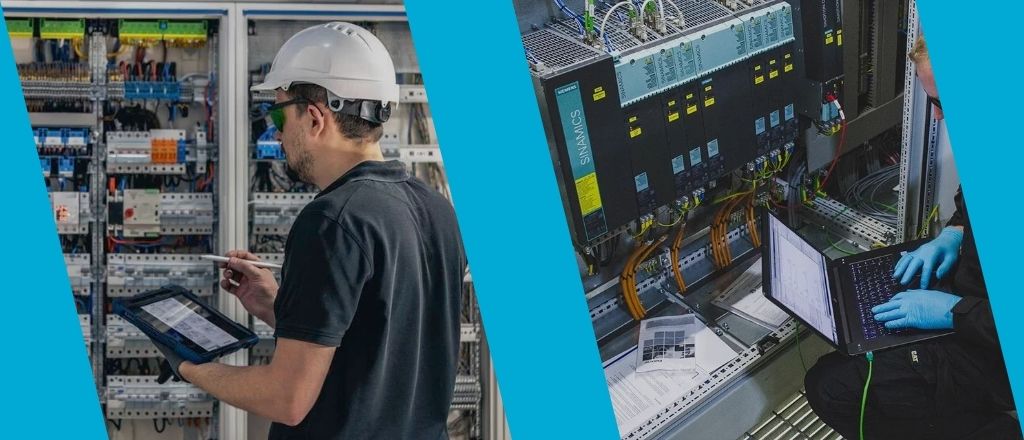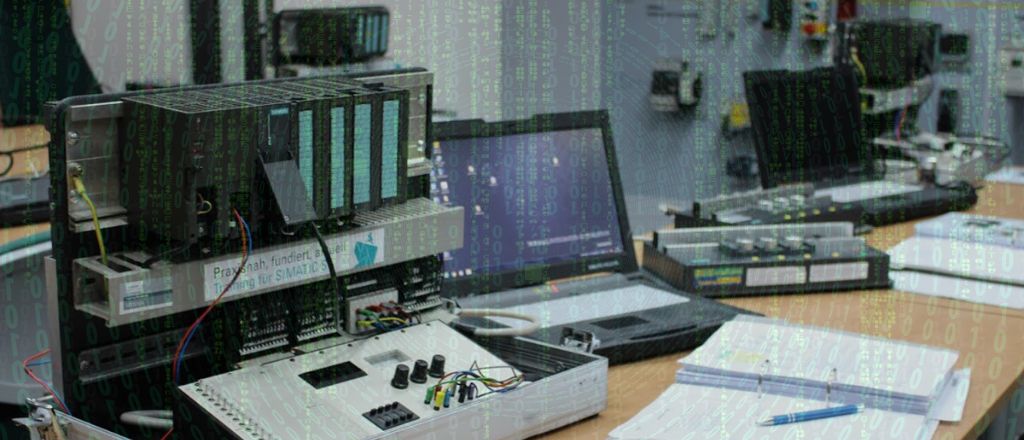PLC (Programmable Logic Controller) coding involves writing programs to control and automate machinery or processes in industrial settings using specialized programming languages.
What is PLC Code?

Definition and Overview of PLC Code
PLC code, or Programmable Logic Controller code, is the backbone of various industries' automated systems. It consists of instructions that dictate the operation of PLCs, specialized industrial computers designed to manage and control manufacturing processes, machinery, and other automation systems. Unlike general-purpose computing, PLC code focuses on high reliability, robustness, and real-time control, ensuring seamless operation in challenging environments.
PLCs originated in the late 1960s when industries required more flexible and efficient control systems than traditional hardwired relays and timers. PLCs revolutionized industrial automation by providing programmable solutions, significantly reducing the complexity and cost of modifying control processes.
How PLC Code Relates to Automation
PLC code plays a critical role in modern automation by enabling precise control and monitoring of industrial processes. Its programming language allows operators to define logic for controlling actuators, sensors, and other equipment. This integration helps automate repetitive tasks, optimize productivity, and ensure consistent product quality. Industries from automotive manufacturing to food processing rely on PLC code to maintain efficiency and reduce human intervention in hazardous or labour-intensive operations.
For example, in the automotive industry, PLCs control robotic arms on assembly lines to ensure consistent and precise operations. Similarly, the PLC code manages temperature controls and conveyor systems in food processing, providing high-quality output while adhering to stringent safety standards.
Types of PLC Code

Ladder Logic Code
Ladder Logic is the most widely recognized and used form of PLC programming. It mimics the appearance of electrical relay circuits, making it intuitive for engineers and technicians familiar with traditional wiring diagrams. Ladder Logic consists of rungs, each representing a specific control task.
This code type is ideal for straightforward applications like motor control, conveyor systems, and light automation. Despite its simplicity, Ladder Logic is highly versatile. It supports complex functions, including timers, counters, and mathematical operations, enhancing its utility across various industries.
To illustrate, consider a conveyor belt system controlled by Ladder Logic. The code ensures that sensors detect packages, start the motor to move the conveyor, and stop when the package reaches the desired position. This simple yet effective control logic demonstrates Ladder Logic's ability to handle repetitive tasks reliably.
Structured Text and Other Code Types
Structured Text (ST) is a high-level, text-based programming language for PLCs. It resembles modern programming languages like Python and C, providing an advantage for developers with software engineering backgrounds. Structured Text excels in applications requiring intricate computations, data handling, and decision-making processes.
Other programming types include Function Block Diagrams (FBD), Sequential Function Charts (SFC), and Instruction Lists (IL). Each type caters to specific automation needs, offering flexibility and enabling engineers to choose the best approach for their projects. For instance, FBD is highly visual and works well for process-oriented applications. At the same time, SFC aids in organizing complex sequential tasks.
In a manufacturing plant, SFC might coordinate a multi-step process like mixing ingredients, heating them to specific temperatures, and packaging the final product. Each step in the process corresponds to a state in the chart, making it easier to visualize and control.
Writing and Testing PLC Code

Best Practices for Writing Efficient PLC Code
Writing effective automation code demands adherence to best practices to ensure reliability and maintainability. These include:
- Clarity and Documentation: Maintain clear, well-commented code to simplify debugging and future updates. Use meaningful variable names and provide a descriptive summary for each logic section. For instance, instead of using a variable name like "X1," use "Conveyor_Start_Signal" to indicate its function. Proper documentation ensures that team members and future developers can easily understand the code.
- Modular Programming: Break down the code into smaller, reusable modules or functions. This structure improves readability and facilitates easier troubleshooting.
- Avoid Redundancy: Eliminate unnecessary instructions or loops to enhance efficiency and reduce execution time. Streamlined code executes faster and is less prone to errors.
- Test in Stages: Validate each code section independently before integrating it into the main program. This approach minimizes errors and ensures functional accuracy.
- Plan for Fail-Safes: Incorporate fail-safes and error-handling mechanisms to mitigate risks during unexpected conditions or equipment malfunctions. For example, include emergency stop logic that overrides all other operations when activated.
Testing and Debugging PLC Code
Testing and debugging are crucial steps in ensuring the reliability of automation code. Developers should follow these steps:
- Simulation Testing: Use PLC simulation software to validate the code in a controlled environment. Simulations help identify logic flaws without risking equipment damage. For example, simulate a scenario where a motor stops unexpectedly and observe whether the system activates backup processes to maintain operation.
- Hardware Testing: Implement the code on actual PLC hardware and monitor its interaction with connected devices. Observe the real-time response to confirm expected performance.
- Debugging Tools: Leverage debugging tools available within PLC programming environments. These tools allow developers to track variable states, step through code, and analyze execution flow.
- Stress Testing: Push the system to its operational limits to ensure stability under peak conditions. For instance, simulate an environment where multiple processes run simultaneously and verify system reliability.
- Iterative Refinement: Address issues as they arise, refine logic, and retest until the code meets all operational requirements.
Conclusion

PLC programming is the cornerstone of industrial automation, providing the logic and control needed to optimize complex processes. From the intuitive simplicity of Ladder Logic to the advanced features of Structured Text, these programming languages offer diverse tools to address various automation requirements. Writing efficient PLC programs demands a focus on best practices, clear documentation, and thorough testing.
By implementing effective PLC code, industries can achieve higher productivity, enhanced safety, and reduced downtime. Whether in manufacturing, energy management, or transportation, PLC programming continues to drive innovation, making it a vital skill in the ever-evolving world of automation.
Frequently Asked Questions
The five main PLC programming languages are Ladder Logic, Structured Text, Function Block Diagram, Instruction List, and Sequential Function Chart.
PLC coding can be challenging for beginners, but with practice and understanding of both software and hardware, it becomes more intuitive, especially with standardized languages like Ladder Logic.
In Australia, a PLC (Programmable Logic Controller) is used in industrial automation to control machinery and processes, widely employed in manufacturing, mining, and other sectors.

